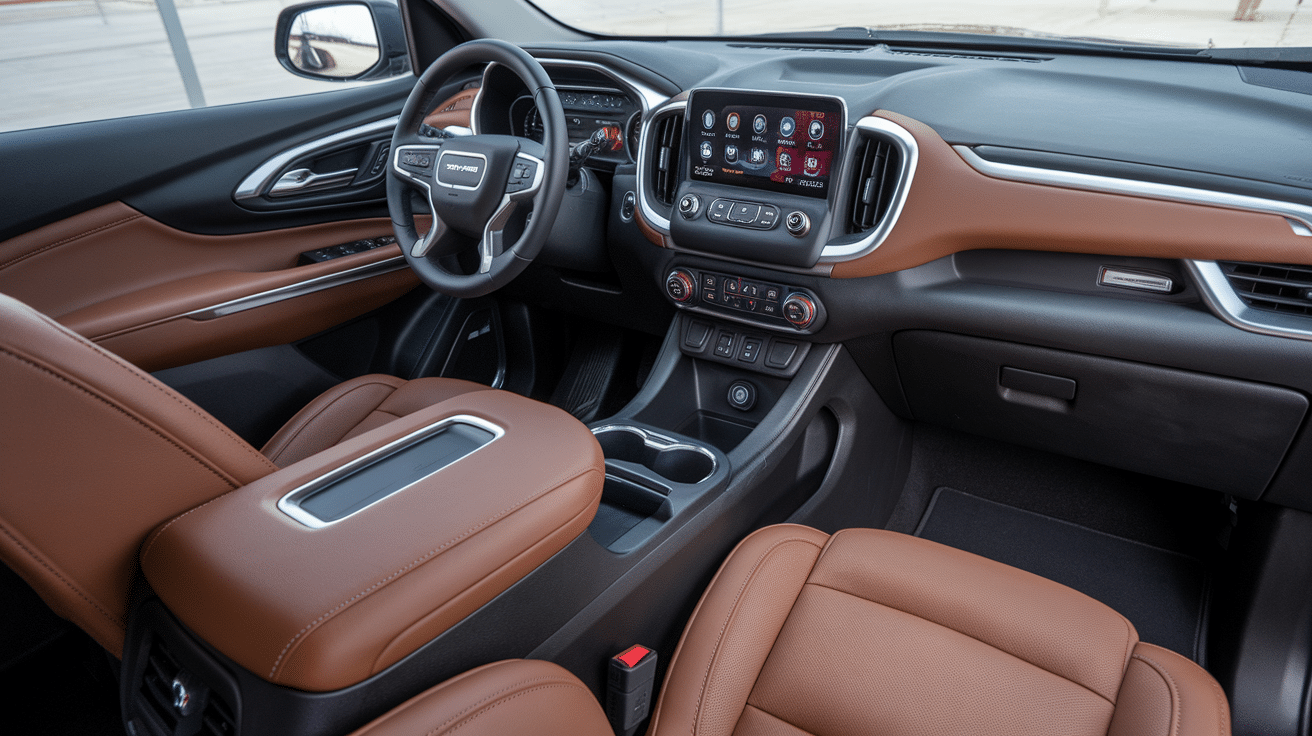Which brand truly holds up over time, Audi or BMW?
If you’re stuck between these two, you’re not alone. I’ve worked on both brands, driven them across states, and listened to friends and clients talk about the good, bad, and expensive.
Some praise BMW’s sporty handling and tight steering. Others love Audi’s grip in bad weather and clean interior design. However, when it comes to reliability, things become murky quickly.
I know you’re here to avoid a headache down the road. You want facts, real-life stories, and honest pros and cons, not sales talk. I’ve put this guide together to help you cut through the noise.
From repair costs and maintenance habits to long-term ownership lessons, I’ve seen firsthand what holds up and what breaks down.
If you’re trying to make a smart, informed choice, this blog will walk you through it in plain terms.
BMV vs. Audi: Who Really Started It All?
When you compare Audi and BMW to see which is the real pioneer, both have deep roots.
Audi inherits its legacy from August Horch, who started Horch & Cie. in 1899 and later founded Audi in 1909. Meanwhile, BMW began in 1916, but it wasn’t until 1928 that they built their first car.
Audi stands out with the 1932 Auto Union, which brought four car makers together; its logo with four rings is a nod to this.
BMW, however, made its mark with sporty engineering, especially after launching the iconic BMW 328 prior to WWII.
Both brands shaped the industry, but Audi’s older start and ground-breaking Auto Union make it a serious contender for the true “OG” of German automobiles.
Today, each brand has global reach and a dedicated following that keeps it at the forefront of innovation. Their rivalry continues to push the standard for German automotive excellence.
How Reliable Are BMW and Audi?

Reliability here means fewer repairs, more predictable maintenance, and lower long-term ownership costs. When comparing BMW vs Audi reliability, BMW holds a clear edge.
According to Consumer Reports, BMW ranks higher than Audi for 2025, consistently placing near the top across several categories. Models like the i4, i5, and X5 earn strong scores.
Audi has made improvements this year but still trails slightly behind, ranking 6th overall. Its best performer is the A4, while the Q8 e-tron remains one of its weaker links.
Both brands sit comfortably in the top 10 among European automakers, but BMW comes out ahead overall. It’s also rated better for used car reliability and typically offers more manageable maintenance costs.
Let’s see a quick side-by-side comparison:
| Category | BMW | Audi |
|---|---|---|
| Reliability Rank (2025) | Top 5 (2nd overall) | 6th overall |
| Most Reliable Model | i4 | A4 |
| Least Reliable Model | iX | Q8 e-tron |
| Maintenance Cost Rank | More favorable | Ranked 25th in maintenance costs |
| Used Car Reliability | Higher | Lower |
BMW Reliability Issues by Model and Year
BMWs are known for its sharp performance, but it’s not immune to reliability concerns, especially as it ages. Many issues stem from complex engineering and premium components that can become costly over time.
1. Engine Issues
Oil leaks and cooling system failures are frequent in:
- 2008–2012 BMW X5
- 2011–2016 BMW 528i
Timing chain problems with N20/N26 engines (used in multiple models):
- Affects 3 Series, 5 Series, X3, X5 (2011–2016)
- Often appears around 70,000 miles
- Can lead to major engine damage
2. Electrical Problems
Common in newer BMW X5 models (2019, 2021)
- Faulty starters
- Weak or failing batteries
- Malfunctioning instrument clusters
3. Suspension and Ride Comfort
- Air suspension failure in older X5s impacts ride quality
- Transfer case and suspension wear become issues after 100,000 miles, particularly in the X5
4. Engine Performance Systems
VANOS system failure (variable valve timing)
- Found in several older BMW models
- It can affect engine performance and require expensive repairs
What to Watch For:
- Older BMWs tend to have more engine-related and suspension issues.
- Newer BMWs are more likely to develop electrical faults and air suspension problems.
Typical Repair Costs:
- Oil leak repairs: $600–$2,500
- Timing chain replacement: $1,000–$4,000
- Electrical repairs (battery, starter, alternator): $600–$2,200
- Suspension/air suspension fixes: $1,000–$3,000
Audi Reliability Issues
Audi vehicles offer refined interiors and confident driving dynamics, but their long-term reliability can be hit or miss. Some models hold up well, while others face repeat issues tied to engine design and electronic systems.
1. Engine Problems
High oil consumption in some engines:
- Affects 2.0T and V6 engines
- Common in A4, A6, Q5, and Q7 models from the early 2010s
Carbon buildup in direct-injection engines:
- Leads to misfires and rough engine performance
- Requires costly intake valve cleaning
2. Transmission Issues
DSG (dual-clutch) transmission problems:
- Found in A3, A4, and smaller SUVs from the 2010s
- Symptoms include jerky gear shifts and potential transmission failure
3. Electrical System Failures
Impact various components such as:
- Power windows
- Infotainment systems
- Exterior and interior lighting
Most frequently reported in A4, A6, Q5, and Q7 models
Engine Reliability Breakdown:
- More Reliable: Post-2016 versions of 2.0T and 3.0T engines (improved design).
- Less Reliable: 2009–2014 2.0T engines, known for timing chain issues and oil burning.
Typical Repair Costs:
- DSG transmission repair: $1,500–$4,000
- Oil consumption repair: $800–$3,000 (may involve piston or ring replacement)
- Carbon cleaning (intake valves): $500–$1,500
- Electrical repairs: $300–$1,200
Maintenance Costs: Audi vs. BMW
Both Audi and BMW recommend maintenance every 10,000 to 15,000 miles or once a year, though frequent city driving may require more service.
Audi tends to cost slightly more upfront. In the first two years, most models stay under $500 annually.
From year three, costs rise to $1,100–$2,500 per year, totaling around $6,500 over five years. Entry-level models like the A3 and A4 are more affordable than SUVs or performance trims.
BMW can be cheaper early on, especially if maintenance is included. However, service needs, like spark plugs, arise more often.
By years 3–5, annual costs range from $1,200 to $2,500, with a 5-year total around $5,400. Independent shops can lower post-warranty costs.
Parts and labor are pricey for both brands, but BMW parts may be slightly cheaper, though more frequent service can even things out. Entry-level models like the A3 and 3 Series are the most cost-friendly.
| Basis | Audi | BMW |
|---|---|---|
| Service Interval | 10,000–15,000 miles | 10,000–15,000 miles |
| Year 1–2 Cost | $250–$500 | $0–$500 |
| Year 3–5 Cost | $1,100–$2,500/year | $1,200–$2,500/year |
| 5-Year Total | ~$6,500 | ~$5,400 |
| Parts & Labor | High, varies by model | High, frequent wear |
Overall, real-world costs depend heavily on the specific model, how it’s driven, and how well it’s maintained. Skipping routine service can lead to expensive problems, no matter which brand you choose.
Audi vs BMW: Ride Quality and Upkeep
Audi is praised for smooth ride quality and refined interiors, especially in higher trims.
Quattro all-wheel drive adds confidence, and newer models pack top-tier safety and infotainment tech, but base trims can feel bare, and electronics may need dealer-level repairs.
BMW stands out for sporty, responsive handling and adaptive suspension that balances comfort and control.
The infotainment system is easier to use, and models like the X3 and 5 Series offer spacious, comfortable cabins.
Upkeep: BMW often costs more to maintain, especially at the dealer. Audi parts are cheaper thanks to Volkswagen ties. Luxury features and tech in both brands can raise repair costs.
Audi leans toward comfort and safety. BMW wins on performance and tech usability. Both have high running costs but deliver a premium experience.
Long-Term Reliability: Which Holds Up Better?
Both Audi and BMW can pass 100,000–150,000 miles with proper care.
BMW models like the 3 Series, 5 Series, and X5 are known for lasting longer when maintained, though they may face oil leaks, suspension wear, and electrical issues over time.
Audi’s A3, A4, and A6, especially post-2016 models, also age well, though issues like oil consumption and timing chain wear are common in early 2010s models.
For both brands, a good service record matters more than mileage. Depreciation hits all luxury cars, but BMW tends to hold better resale value in enthusiast circles, while Audi stands out for modern features and slightly lower upkeep.
|
Criteria |
BMW |
Audi |
|
Reliable High-Mileage Models |
3 Series, 5 Series, X5 |
A3, A4, A6 (post-2016) |
|
Common Issues (Post-100k) |
Oil leaks, suspension, and electronics |
Oil use, timing chain, carbon buildup |
|
Depreciation (5 Years) |
~35–45% |
~40–50% |
|
Resale Strength |
Strong on popular/pure driving models |
Higher on newer, tech-packed models |
What the Experts Say: BMW vs Audi
Expert reviews from Edmunds and Car and Driver consistently rank both Audi and BMW as top-tier German luxury brands, but each has its own edge.
In direct comparisons, Edmunds highlights the BMW 3 Series for its class-leading drive quality, sharp handling, and engaging performance, calling it “the driver’s car of this segment.” BMW also scores slightly higher in comfort and practicality.
The Audi A4, on the other hand, earns praise for its refined interior, cutting-edge tech, and strong overall value. However, it trails BMW slightly in infotainment responsiveness and rear-wheel drive dynamics.
Car and Driver echoes these findings: BMWs tend to offer more driving excitement, while Audi often leads in design and digital features.
| Category | BMW 3 Series | Audi A4 |
|---|---|---|
| Edmunds Rating | 7.9–8.5 (driving) | 7.5–8.0 (driving) |
| Comfort | 7.5–8.0 | 7.5 |
| Interior | 8.0 | 8.0+ (premium finish) |
| Technology | 8.0 | 8.0 (modern, intuitive) |
| Value | Strong, but options add | Slightly better overall |
| Fun-to-Drive | Best-in-class | Close behind |
Both brands include a 4-year/50,000-mile limited warranty, but BMW offers complimentary maintenance, giving it a small edge in ownership perks.
Conclusion
If you came here looking for expert insights on BMW vs Audi reliability, you now have a clear breakdown of what each brand brings to the table.
Choosing between the two isn’t just about style or performance; it’s about knowing what to expect long-term.
High repair costs, complex tech, and maintenance surprises are real concerns. But now, you’ve seen the patterns, strengths, and common issues that help make an informed decision.
BMW leans sporty with higher upkeep, while Audi leans comfortable with potential electronic headaches. Either way, both require a careful look at the model, year, and service history.
Don’t just go by the badge; go by what works best for your needs and ownership budget.








